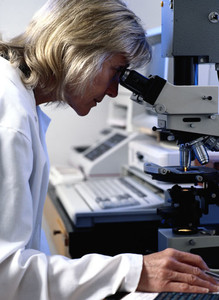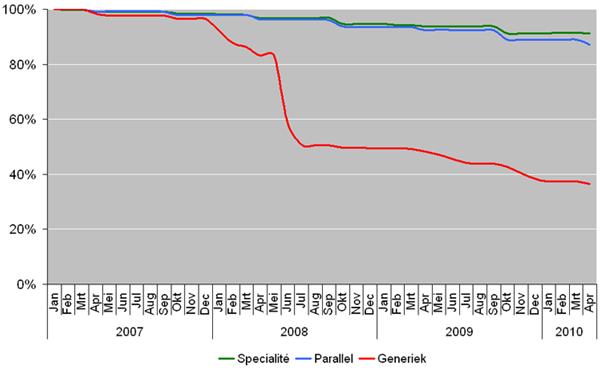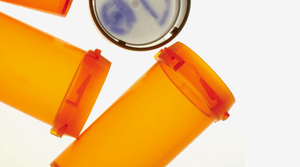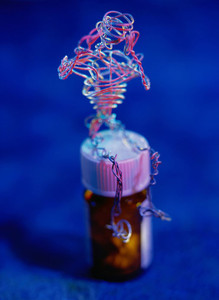The market for generic medicines in The Netherlands ambulatory health care is developing, with more being used, more companies supplying generic medicines and prices tumbling. This is despite the restriction on the reimbursement of hypnotics and tranquilisers on the basic insurance from 1 January 2009. Reimbursement in this category fell by 25%, from Euros 612 million in 2008 to Euros 459 million in 2009.
The generics’ share of the total medicines, reimbursed by the basic insurance package, rose slightly in 2009 to 57.1%. This is seen as the result of the ‘preference policy’. Under this policy health insurance companies are allowed to limit the entitlement of the insured person to the medicines chosen by the insurance company. This encourages the use of (cheaper) generic medicines, and has resulted in the generics’ share of the market increasing by an average of 3.7% per year over the last three years. To put this in another way, the number of generic medicines dispensed from prescriptions in 2009 rose to 97 million items, a rise of 10.3% in a year.
The larger market for generics thus created has encouraged a number of smaller firms to enter the market with medicines tailored specifically to providing medicines that are taken up by insurers under the preference policy. The more flexible smaller players have competed successfully with the established players. Teva’s market share has declined 15% since 2007 while Sandoz’s has declined by almost 20%.
The preference policy has had a third result, of forcing a reduction in the price of generic pharmaceuticals. The average price of generics in December 2009 was a good 22% lower than in December 2008. In comparison with December 2007 the average price is now a whopping 60% lower.
In the first quarter of 2010 the price of all medicines fell by 0.9% in comparison with the fourth quarter of 2009. This drop is mostly due to a further decrease in the prices of generic medicinal products. For example, when the patent on Cozaar expired Teva/Pharmachemie supplied a generic variant in March 2010 that was 20% of the price of the original speciality.
Medicines prices as a whole going down
The price of prescription medicines as a whole went down in 2009 by almost 9%. In 2010 the drop is continuing, see Figure 1. This is mostly due to a further extension of the preference policy and a maximum price being set for a number of biologicals. The limited decrease is also partly due to the Medicines Prices Law (Wet Geneesmiddelen Prijzen, WGP), which has helped force prices down in recent years by on average 3 to 4% per year. The WGP obliges the suppliers not to price their medicinal products above the average level of those in four surrounding countries, Belgium, Germany, France and Great Britain. The most recent pricing round led in April 2010 to a drop in the price of prescription medicines of 0.8%.
Figure 1: Trends in the price of prescription medicines by source
Source: Stichting Farmaceutische Kengetallen
Related articles
The preference policy in The Netherlands
Big shifts in generics shares due to Dutch preference policy
Reference
Stichting Farmaceutische Kengetallen. Grote verschuivingen in generiek, Pharmaceutisch Weekblad, 12 March 2010;145(10):11.








 0
0












Post your comment